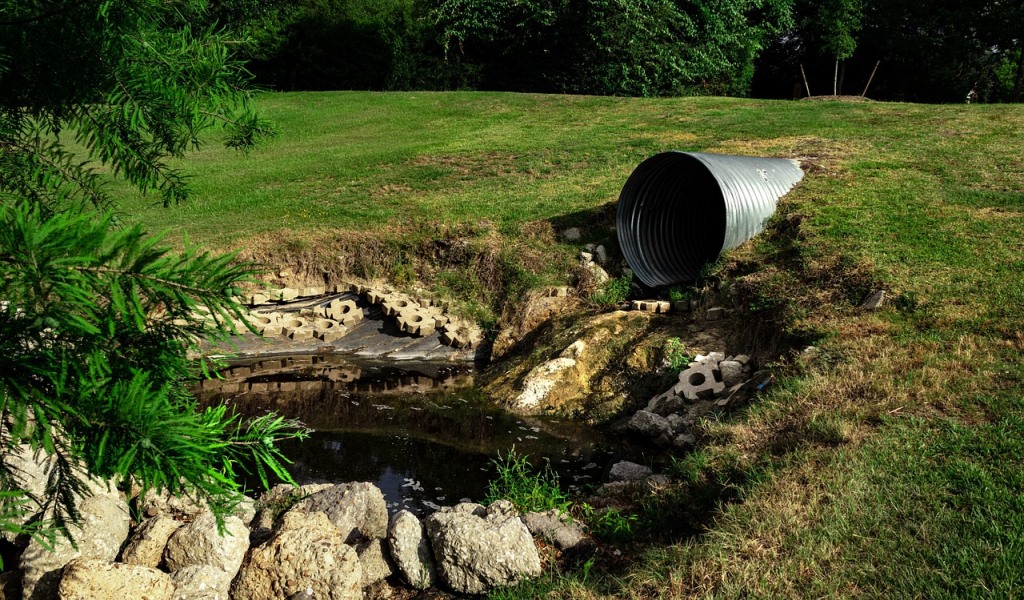On October 7, 2022, the Pennsylvania Department of Environmental Protection (DEP) awarded $3 million in grant funding to local governments and organizations to restore the health of local watersheds around the state by reducing water pollution.
“Reducing current and future nonpoint source pollution is critical to restoring the health of the water ecosystems Pennsylvanians depend on,” said DEP Acting Secretary Ramez Ziadeh.
“It requires painstaking work based on understanding the impact that activities on land have on our streams and rivers. DEP is pleased to support communities across Pennsylvania who are working to improve their watersheds one stream segment, one land parcel, one best-practice project at a time,” he added.
The grants target nonpoint source pollution, or pollution that enters streams and rivers from widespread sources, rather than from a single specific discharge point, such as a pipe.
About 95 % of water-quality-impaired watersheds in Pennsylvania are affected by the following types of nonpoint source pollution:
- Nitrogen, phosphorus, and sediment pollution from agricultural activities, urban stormwater runoff, and streambank and shoreline erosion; and
- Iron, aluminum, and acidity pollution associated with energy resource extraction and acid mine drainage (AMD).
Funding comes from the U.S. Environmental Protection Agency, authorized through Section 319(h) of the federal Water Pollution Control Act.
The DEP Section 319 Nonpoint Source Management Grants program supports projects that carry out best management practices specified in plans for 42 watersheds around the state, with special consideration for projects in Pennsylvania’s share of the Chesapeake Bay Watershed.
Development of new plans to restore additional impaired watersheds is also supported.
2022 Section 319 Grant funding winners:
Statewide
Villanova University: $644,493 to continue the National Monitoring Program study to conduct long-term observation and analysis at three stormwater management sites on campus: a stormwater wetland, a bioinfiltration rain garden, and the Commons student housing development/stormwater infrastructure site. This monitoring study follows past strategies and leverages a long dataset to inform future recommendations for design and implementation of stormwater best management practices throughout the state.
Allegheny County
Hampton Township: $343,799 for floodplain restoration and reconnection, stream segment restoration, and streambank buffer enhancements along Pine Creek. The projects annually will remove approximately 20.7 pounds of nitrogen, 2.3 pounds of phosphorus, and 15.7 tons of sediment from the creek.
Clearfield County
Clearfield County Conservation District: $219,347 for Phase 1 of a two-phase AMD treatment project for Montgomery Creek in Pike Township. The flow and content of three AMD discharges into Killer Tributary will be monitored for 18 months. The data will inform development of a treatment system that will be constructed in Phase 2. The entire project will remove 73% of the AMD in the Killer Tributary and significantly improve water quality downstream on the main stem of Montgomery Creek.
Dauphin County
Tri-County Conewago Creek Association: $104,000 to design and apply for permitting for stream segment restoration, streambank buffer planting, and bioswale enhancement projects at locations on Hoffer Creek, Conewago Creek main stem, and unnamed tributaries to Conewago Creek in Londonderry and Conewago townships. When constructed, the projects annually will remove 3,839 pounds of nitrogen, 773 pounds of phosphorus, and over 655,000 pounds of sediment from Conewago Creek. This project is part of the Conewago Creek Watershed Implementation Plan as well as the Dauphin Countywide Action Plan in Pennsylvania’s Chesapeake Bay Phase 3 Watershed Implementation Plan.
Indiana County
Indiana County Conservation District: $322,920 to design and construct an animal heavy use area and manure storage facility at a farm in East Mahoning Township at the headwaters of South Branch Plum Creek. Providing a stabilized area for livestock to congregate in winter months and preventing soil erosion and nutrient runoff, project annually will remove 450 pounds of nitrogen and 62 pounds of phosphorus from the creek.
Lancaster County
Donegal Chapter of Trout Unlimited: $188,500 to design and permit projects at three sites in Fulton Township to restore stream segments and plant forest buffers on the main stem Conowingo Creek and the Little Conowingo Creek. These projects are part of the Conowingo Creek Watershed Implementation Plan as well as the Lancaster Countywide Action Plan in Pennsylvania’s Chesapeake Bay Phase 3 Watershed Implementation Plan.
Lebanon County
Doc Fritchey Chapter of Trout Unlimited: $457,645 to complete design and permitting for a stream restoration project on Hammer Creek at Barry Farm. The project will reconnect the floodplain, install livestock exclusion fencing, and plant forest buffers around restored stream segments and wetlands. These will stabilize approximately 8,800 linear feet of streambank, restore 3 acres of wetlands, and install 17 acres of forest streambank buffers, reducing sediment erosion at this site by over 80 percent. This project is part of the Hammer Creek Headwaters Alternative Restoration Plan as well as the Lebanon Countywide Action Plan in Pennsylvania’s Chesapeake Bay Phase 3 Watershed Implementation Plan.
Schuylkill County
Schuylkill Headwaters Association: $292,450 to design and permit a reclamation project for abandoned de-silting basins encompassing 100 acres in Schuylkill Haven. Coal waste will be removed, floodplain will be restored, a wetland will be created, and streambank will stabilized and planted with a forest buffer along a segment of the Schuylkill River. The project is a priority of the Upper Schuylkill River Watershed Implementation Plan.
York County
York County Conservation District: $510,879 to restore a stream segment and plant two acres of riparian buffer along a tributary to South Branch Codorus Creek at Terra Farm in Codorus Township to reduce urban and agricultural nonpoint source pollution in this impaired stream. This project annually will remove 6,000 pounds of nitrogen, 10,200 pounds of phosphorus, and 72.8 tons of sediment. The project will advance the Codorus Creek Watershed Implementation Plan as well as the York Countywide Action Plan in Pennsylvania’s Chesapeake Bay Phase 3 Watershed Implementation Plan.
Photo by Thomas Hoang from Pixabay.

